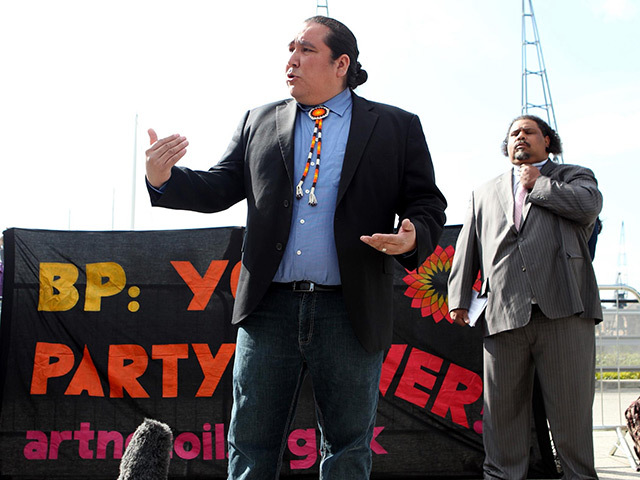
Campaigners have raised new concerns over controversial “tar sands” after it emerged a series of oil spills have occurred at one site in recent months.
The unconventional fuel is being produced in Canada, but opponents warn it is more polluting than conventional oil as it requires significant energy to extract, pushing up its carbon emissions, and have raised concerns over local environmental impacts.
Opponents of the fuel source are campaigning for a European Union vote to class it as more polluting than conventional oil under the Fuel Quality Directive on reducing emissions from transport fuel, which could effectively stop its import to EU countries.
News has emerged of four bitumen spillages in recent months which have polluted water and land at a site at Cold Lake, Alberta, run by Canadian Natural Resources Ltd (CNRL), killing birds, beavers, frogs and shrews and damaging habitats.
Regulators and the company involved insist they are working hard to tackle the problem at the site, which falls within the traditional territory of the indigenous Beaver Lake Cree Nation, and investigate why it happened.
But the Co-operative, which has backed the Beaver Lake Cree’s legal fight against tar sands over concerns extraction interferes with their constitutionally-protected rights to hunt, fish and gather plants in the area, has hit out at the news.
Colin Baines, campaigns manager at the Co-operative, said: “What is happening within Beaver Lake Cree ancestral lands is nothing short of an environmental disaster.
“A huge area is being destroyed with toxic bitumen ponds forming, lakes and forests being polluted and animals being killed.
“Thousands of barrels of tar sands oil have been pumped from the surface in recent weeks with no end in sight. How much more is more is still permeating through the subsurface, contaminating forests and waterways, is unknown.
“We believe that the exploitation of tar sands and other unconventional fossil fuels threatens global efforts to avoid dangerous levels of climate change and, as these leaks have highlighted, risk ecological disaster.”
CNRL said a review was under way into why the leaks had occurred, but said it believed bitumen had risen to the surface because of mechanical failures of well bores.
The company said oil was being extracted from a depth of around 500 metres deep, by injecting steam through a well bore for several weeks and then reversing the flow to retrieve the bitumen, a method that had been used by the industry for more than 30 years.
Some 21 hectares (52 acres) had been affected by the spills but following successful clean-up efforts the 120-strong team dedicated to tackling the problem were now focusing on a reduced area of less than 14 hectares (35 acres), the company said.
In a statement, CNRL said: “The remaining bitumen emulsion does not pose a health or human safety risk and we are working diligently to clean up the affected sites.”
But a Canadian government scientist who blew the whistle about the spills has warned that officials did not understand what had happened on the site, which is on the Cold Lake Air Weapons Range, or how to stop it.
Following the spills, Alberta Energy Regulator demanded that the CNRL restricted its steam injection operations, and said it was investigating the incidents.
The province’s Environment and Sustainable Resource Development department said wildlife mitigation efforts were under way, with animals being caught and relocated, containment booms in place, and
oil-affected animals being assessed by a vet.
Waterfowl, beavers, frogs, tadpoles and shrews had died as a result of the spills, officials said.
Recommended for you
